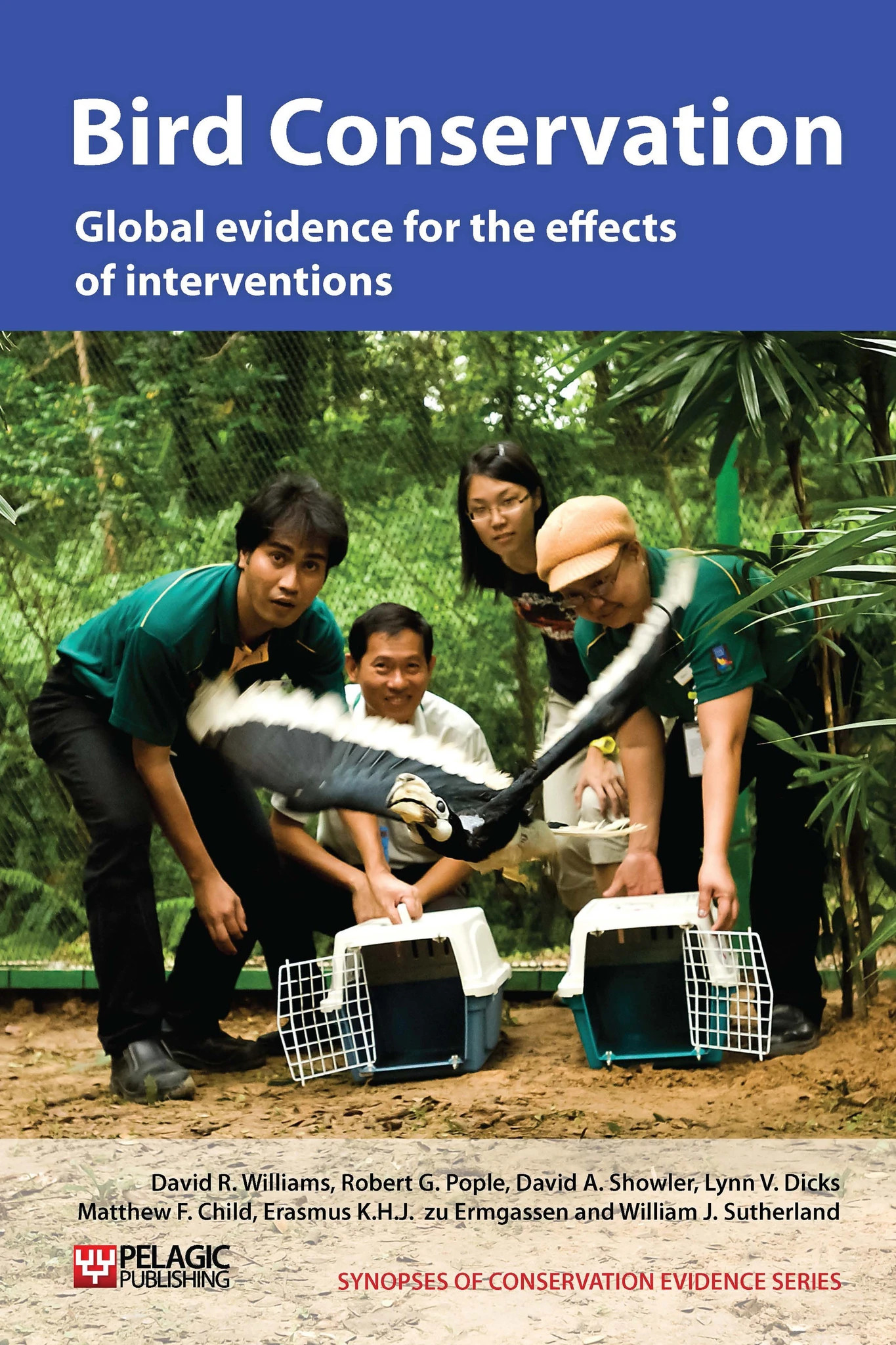Actions to conserve biodiversity
We have summarised evidence from the scientific literature about the effects of actions to conserve wildlife and ecosystems.
Review the evidence from the studies
Not sure what Actions are? Read a brief description.
Search for evidence
e.g. "frogs chytrid"
454 Actions found
Refine
Hide
454 Actions found
Download Actions
| 0 selected |
|
Order results by:
| Action | Effectiveness | Studies | Category | |
|---|---|---|---|---|
|
Enhance bird taxonomy skills through higher education and training Action Link |
No evidence found (no assessment) | 0 |
|
|
|
Provide training to conservationists and land managers on bird ecology and conservation Action Link |
No evidence found (no assessment) | 0 |
|
|
|
Support or maintain low-intensity agricultural systems Action Link |
No evidence found (no assessment) | 0 |
|
|
|
Practice integrated farm management Action Link |
No evidence found (no assessment) | 0 |
|
|
|
Food labelling schemes relating to biodiversity-friendly farming Action Link |
No evidence found (no assessment) | 0 |
|
|
|
Cross compliance standards for all subsidy payments Action Link |
No evidence found (no assessment) | 0 |
|
|
|
Reduce field size (or maintain small fields) Action Link |
No evidence found (no assessment) | 0 |
|
|
|
Protect in-field trees Action Link |
No evidence found (no assessment) | 0 |
|
|
|
Plant in-field trees Action Link |
No evidence found (no assessment) | 0 |
|
|
|
Tree pollarding and tree surgery Action Link |
No evidence found (no assessment) | 0 |
|
|
|
Manage stone-faced hedge banks to benefit birds Action Link |
No evidence found (no assessment) | 0 |
|
|
|
Plant nettle strips Action Link |
No evidence found (no assessment) | 0 |
|
|
|
Leave unharvested cereal headlands within arable fields Action Link |
No evidence found (no assessment) | 0 |
|
|
|
Use 1% barley in wheat crops for corn buntings Action Link |
No evidence found (no assessment) | 0 |
|
|
|
Create corn bunting plots Action Link |
No evidence found (no assessment) | 0 |
|
|
|
Maintain lowland heathland Action Link |
No evidence found (no assessment) | 0 |
|
|
|
Maintain rush pastures Action Link |
No evidence found (no assessment) | 0 |
|
|
|
Plant Brassica fodder crops Action Link |
No evidence found (no assessment) | 0 |
|
|
|
Use mixed stocking Action Link |
No evidence found (no assessment) | 0 |
|
|
|
Employ areas of semi-natural habitat for rough grazing Action Link |
No evidence found (no assessment) | 0 |
|
|
|
Maintain wood pasture and parkland Action Link |
No evidence found (no assessment) | 0 |
|
|
|
Manage perennial bioenergy crops to benefit wildlife Action Link |
No evidence found (no assessment) | 0 |
|
|
|
Sowing roadside verges Action Link |
No evidence found (no assessment) | 0 |
|
|
|
Scare fish-eating birds from areas to reduce conflict Action Link |
Evidence not assessed | 0 |
|
|
|
Use larger hooks to reduce seabird bycatch Action Link |
No evidence found (no assessment) | 0 |
|
Download Actions
| 0 selected |
|

Bird Conservation - Published 2013
Bird Synopsis
Watch this search
If you are familiar with RSS feeds, please click the button below to retrieve the feed URL:
RSS feed for this searchIf you are unfamiliar with RSS feeds, we would suggest reading this BBC article.
Unfortunately, due to the number of feeds we have available, we cannot provide e-mail updates. However, you could use tools such as Feed My Inbox to do this for you.
What are 'Individual studies' and 'Actions'?
Individual studies
An individual study is a summary of a specific scientific study, usually taken from a scientific journal, but also from other resources such as reports. It tells you the background context, the action(s) taken and their consequences.
If you want more detail please look at the original reference.
Actions
Each action page focuses on a particular action you could take to benefit wildlife or ecosystems.
It contains brief (150-200 word) descriptions of relevant studies (context, action(s) taken and their consequences) and one or more key messages.
Key messages show the extent and main conclusions of the available evidence. Using links within key messages, you can look at the paragraphs describing each study to get more detail. Each paragraph allows you to assess the quality of the evidence and how relevant it is to your situation.
Where we found no evidence, we have been unable to assess whether or not an intervention is effective or has any harmful impacts.





)_2023.JPG)














